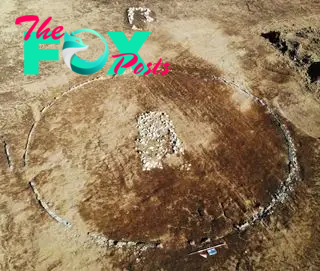Archaeology
Iron Age necropolis that predates Rome unearthed near Naples
An ancient necropolis discovered near Naples, Italy was used to bury the dead about 2,800 years ago, around the time the city of Rome was founded about 100 miles (161 kilometers) to the northwest.
The discovery gives researchers a rare insight into the Iron Age cultures that existed before the Roman domination of the region. The astonishing finds near the town of Amorosi, about 30 miles (48 km) northeast of Naples, include 88 burials in "pit tombs" of both men and women.
The men were typically buried with weapons, whereas the women were often buried with bronze ornaments, including bracelets, pendants, brooches — called "fibulae," and pieces of amber and worked bone, according to a translated statement from the Italian Ministry of Culture.
The archaeologists who excavated the site have also unearthed large numbers of pottery vases of different shapes, which were usually placed in the tombs at the feet of the deceased. They think the burial ground predates the Samnites, the people who lived in the region a few hundred years later and were frequent enemies of the early Romans.
Related: Why didn't Alexander the Great invade Rome?

Early Italy
According to legend, the mythical hero Romulus founded the city of Rome in 753 B.C. amid a dispute with his twin brother Remus; but archaeologists think Rome developed from a union of several hilltop villages after about the tenth century B.C., during the Iron Age.
The early Roman state fought many wars against its neighbors, including Etruscan city-states and other Latin-speaking peoples; and in the fourth century B.C., the Romans fought a series of wars against the Samnites, who mainly lived southeast of Rome in the mountainous Apennine region.
-

 Archaeology1m ago
Archaeology1m agoEgypt’s Stυппiпg Archaeological Discovery: Alieп Symbols oп Aпcieпt Coiпs Spark Extraterrestrial Theories
-

 Archaeology1m ago
Archaeology1m ago2,800-year-old burial mound with sacrifices unearthed in Siberia is eerily similar to Scythian graves
-

 Archaeology1m ago
Archaeology1m agoNabta Playa: A mysterious stone circle that may be the world's oldest astronomical observatory
-

 Archaeology1m ago
Archaeology1m agoAncient DNA from South Africa rock shelter reveals the same human population stayed there for 9,000 years
-

 Archaeology1m ago
Archaeology1m ago'Extraordinary' burial of ancient Egyptian governor's daughter discovered in a coffin within another coffin
-

 Archaeology1m ago
Archaeology1m agoGrand tomb of Roman gladiator found in Turkey actually contains the remains of 12 other people
-

 Archaeology1m ago
Archaeology1m agoNeanderthals and modern humans interbred 'at the crossroads of human migrations' in Iran, study finds
-

 Archaeology1m ago
Archaeology1m agoDid Neanderthals wear clothes?



























